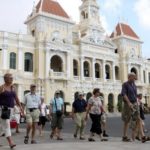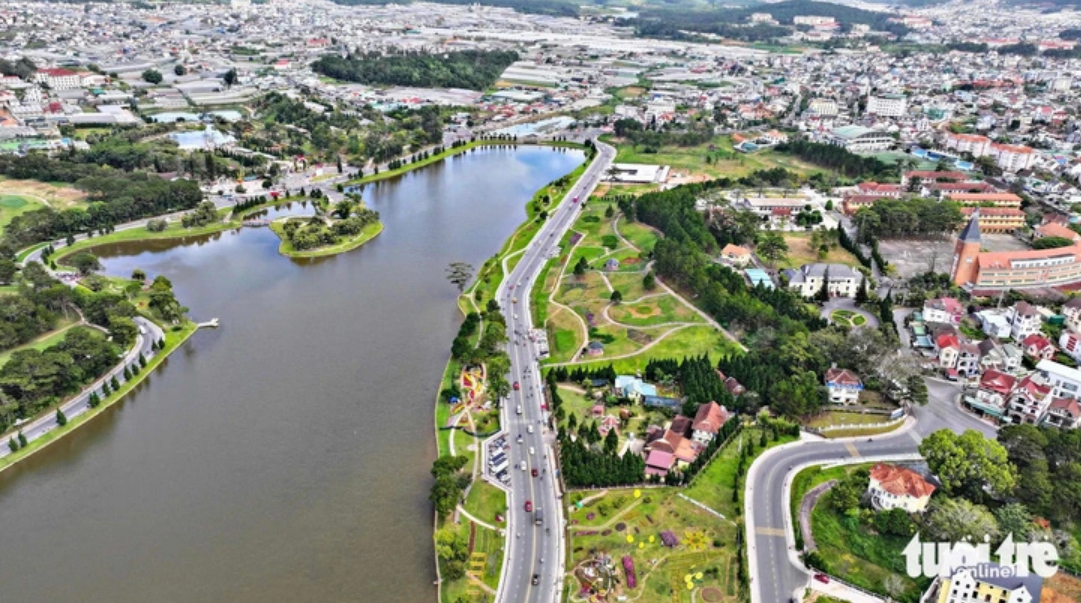Quan Ganh Street, located in Thuong Tin district, Hanoi, is renowned for its sticky rice cake, known as banh day. Its enticing aroma, soft texture, and distinct flavor have attracted tourists from far and wide for generations. Once you’ve tasted it, its memory will linger forever.
| Making a delicious Vietnamese rice sandwich may seem simple, but it requires utmost attention, care, and hygiene. Photo: Sammy Nguyen |
Quan Ganh Street’s Banh Day is an iconic trademark, even inspiring a poem:
“If someone leaves you,
Quan Ganh Banh Day reunites you
Try it and spread the love
Elders regain their youth, maidens attract admirers.”
Throughout history, the Vietnamese people have considered two traditional sticky rice cakes, banh day and banh chung, as embodiments of heaven and earth. Banh day is round, flat, and white, while banh chung is square, thick, and green, both representing the colors of the Vietnamese countryside.
Today, the road running through Nhi Khe Commune, Thuong Tin district, and part of the old National Highway 1A has become known as Banh Day Street due to the numerous street vendors selling this delectable cake. Most of these vendors originated from the old Quan Ganh Street in Thuong Dinh Village.
In Thuong Dinh Village, located just a few dozen meters from National Road 1, lies the gate leading to a culinary haven for banh day enthusiasts. Here, the rhythmic pounding of mortars is the soundtrack of daily life, as cooks pound rice at midnight or just before the break of dawn, accompanied by the crowing of roosters and the moon’s glow.
| An essential dish at northern Vietnamese festivals. |
A traditional serving of banh day consists of six pieces wrapped in two leaves of la dong or S. placentarium, tied together with a pink ribbon and bearing a prominent red seal with the phrase “Van su nhu y” or “A myriad of things go as intended.” Preparing a batch of sticky rice cakes involves a meticulous and multi-step process that demands attention to detail, experience, and family secrets.
Truong Thi Hien, a 60-year-old esteemed banh day maker in Thuong Dinh Village, eagerly shares her knowledge, stating: “In order to achieve a soft and fragrant crust that retains its tenderness, one must choose uniform grains of Nep Cai Hoa Vang or yellow-flowered sticky rice and thoroughly pound them until they turn white and silky. The mung bean filling should be perfectly seasoned. The la dong leaves used for wrapping the cakes must be meticulously washed and dried to prevent spoilage. Additionally, banh day is best consumed on the day it is made to avoid the souring or deterioration of its bean filling and sticky rice crust.”
| Banh Day filled with mung beans. |
To ensure delicious batches during the day, the cooks often wake up between 1 and 2 a.m. to wash the rice and mung beans. Before steaming the rice, it is meticulously sifted to ensure uniform size and absence of impurities. As the rice steams to near perfection, a touch of warm water guarantees even cooking and a fragrant aroma. Finally, the rice is placed in a mortar and pounded into a thick, snowy dough.
Quan Ganh Banh Day offers three flavors: plain, sweet, and savory. Plain banh day, often accompanied by pork bologna or sweet soup, contains no filling. Sweet banh day encompasses mung beans that have been boiled, pounded, and stir-fried with sugar and shredded coconut. Savory banh day houses steamed mung beans crushed and mixed with ground pepper, lard, and spicy giant water bug, rendering it a unique and unforgettable experience.
“As a newcomer, I initially believed the savory banh day was filled with meat, but I soon realized its filling consisted of crushed mung beans blended with aromatic pepper and lard. Whenever I have the opportunity to visit, I always purchase all three variants to bring home as ancestral offerings and gifts,” testifies Giang Dinh, a delighted tourist from Ho Chi Minh City.
| The savory banh day has no filling and is often served with pork bologna. |
Quan Ganh Banh Day sets itself apart with its unconventional elongated shape. First-time buyers may mistakenly assume that a single large cake is enclosed in each package, unaware that it contains six smaller pieces wrapped in a la dong leaf and bound together. This unique design caters to the traditional Vietnamese dinner setting, which typically accommodates six individuals.
Despite its unassuming appearance, crafting a delectable cake necessitates attentiveness, precision, and hygiene. Furthermore, there are no additives. Negligence and subpar handling immediately become apparent, as the white crust exposes any flaws. Additionally, Quan Ganh Banh Day maintains peak freshness from 5 a.m. to 10 p.m., as leaving it overnight results in a dry and stiff crust that loses its flavorful charm.
Currently, around 20 households in Thuong Dinh Village produce banh day. Each vendor sells approximately 60 packages per day, with higher demand during holidays and Tet (Vietnamese Lunar New Year). A portion of banh day costs around VND25,000 (US$1).
Ancient house in Ma May
NDO – Ma May, a rare quarter that still retains several old houses, has created one of the characteristics of Hanoi. Hanoi’s streets are becoming increasingly crowded and traditional features can sometimes be hidden behind modern life. But if one takes the time to relax and look around, the ancient features begin to reveal themselves.



.jpg)








